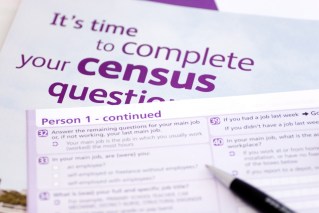Natalie Carter has “played both sides” of the fitness industry in her 12 years as a personal trainer, both in gyms and on her own.
She thinks her preference of where to work out will surprise you.
“It’s going to kind of shock people that it’s exercising at home or outside,” says Ms Carter. “I’m just not 100 per cent convinced that a gym membership is always the best solution.”
“I think that outside and at-home you can still achieve everything that you could possibly do in a gym environment.”
Ms Carter certainly isn’t alone in doubting gyms. A recent study conducted by a team of researchers at Federation University in Melbourne, Bond University, the University of South Australia, Sports Medicine Australia and Fitness Australia found that over a third of fitness centres do not comply with industry guidelines to prevent injuries.
The study surveyed more than 1100 people in the fitness industry and found that gyms and fitness centres are failing to screen members for pre-existing health conditions, despite this being a key part of the voluntary guidelines put in place by Fitness Australia.
The New Daily looks at whether it’s better to work out at home or at a gym.
The question of safety
Rebecca Roussos, co-owner of multiple Snap Fitness gyms in Sydney, thinks that working out at home is more unsafe.
“My dad had a home gym for years and thought he was fit and thought he was fine,” Ms Roussos says. “I can’t even begin to explain the number of issues his body has in terms of range of movement, inflexibilty in his joints. He’s snapped his Achilles. The knowledge wasn’t really there with what he was doing, and over the years things built up.”
Gym staff are well-trained to make sure you don’t injure yourself, Mr Roussos says.
“The staff, managers, everybody, they’re all trained up. Everybody has to have their Certificate III and IV in Fitness, which means we’re all always keeping an eye on you to make sure that you are okay and that you’re doing things correctly.”
But sports and exercise physician Dr Hamish Osborne of New Zealand’s University of Otago doesn’t necessarily buy the argument that gyms are safer, or better, than working out at home.
“I’m not aware of there being any scientific literature that proves that this kind of environment is safer than any other. I see a lot of people on a regular basis who get injured in franchised gymnasiums with qualified gym instructors,” says Dr Osborne, a senior lecturer on the subject.
“Don’t get me wrong – I see plenty of people who have injured themselves at home. They just make perhaps different but often the same mistakes as qualified gym instructors.”
The benefits of a home gym
Dr Hamish Osborne says exercising at home is cheap, time efficient and “at least equally effective” as gyms for sticking to a regular exercise plan.
“The more people we can get participating in regular physical activity, whether it be in a gym or at home, the better,” Dr Osborne says.
Personal trainer Natalie Carter thinks the time savings of staying at home are reason enough to make the switch.
“It cuts out that 30-minute commute,” Ms Carter says. “That’s a motivation killer! God, I’ve known of people to be on their way to the gym, do a quick pit stop, get some takeaway instead, turn back around and totally not even go to the gym.”
The problem with gyms
Personal trainer Natalie Carter, who once worked as a sales consultant at a gym, sees a problem with the way gyms attract customers.
“If you look at the average gym goer, it’s generally on January 1st they roll up. They’ve made their New Year’s resolution to get fit and change their whole life. ‘Wow, this is amazing’, they say. And then within a couple of weeks, they’re never going to set foot in that door again.”
She also thinks that gyms are intimidating and demotivating for those wanting to lose large amounts of weight.
What you can’t get at home
Cofounder of Anytime Fitness Australia Justin McDonell says there is “a much wider range of professional equipment” at gyms.
You might also be the kind of person that needs competition to work up a sweat.
“The club environment means other people are working out alongside you, so it provides more motivation. You are not the only one working hard,” Mr McDonell says.
Nigel Miller, franchisor and managing director at Plus Fitness, says that home gyms are typically “set and forget” and don’t lead to long-term results. And he disagrees that fitness centres like his own are “grungy”, crowded and uninviting.
“The industry has changed a hell of a lot in the past few years, and there are a lot of different models of gym out there now,” says Mr Miller.
For those who hate crowded gyms, Mr Miller recommends joining a 24-hour centre and going at less popular times.
What should you buy?
The three gym owners spoken to by The New Daily all agreed that lack of equipment is a major problem with a home gym, and that the variety on offer at fitness centres makes them far superior.
But if you do decide that working out at home is the cheaper and more effective option for you, then here’s a handy list of what to buy, compiled with the help of personal trainer Natalie Carter.
Cardio equipment
Skipping rope: $10
Running shoes: $100
Old wooden chair or box lying around the house: free!
According to Natalie Carter, skipping is one of the best cardio exercises you can do.
Once you’re done with the rope, grab a box or chair and step up and down, up and down, on a chair or box to get a fantastic cardio workout that will strengthen yours legs and get your heart pumping.
Then, put your running shoes on and jog or sprint around the block.
Strength
Bulking up can be a more costly affair, but with some judicious spending you can still end up paying much less than an annual gym membership.
Barbell set and squat rack: $500
Set of dumbbells or kettle bells in various weights: $200
If you want a cheaper option, go for a set of suspension straps, which you can find for around $180.
If you don’t want to spend anything at all, just do some regular push ups.








